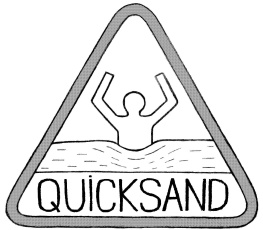D. Petre Bogdan - Quicksands of software development
Here you can read online D. Petre Bogdan - Quicksands of software development full text of the book (entire story) in english for free. Download pdf and epub, get meaning, cover and reviews about this ebook. year: 2021, publisher: leanpub.com, genre: Art. Description of the work, (preface) as well as reviews are available. Best literature library LitArk.com created for fans of good reading and offers a wide selection of genres:
Romance novel
Science fiction
Adventure
Detective
Science
History
Home and family
Prose
Art
Politics
Computer
Non-fiction
Religion
Business
Children
Humor
Choose a favorite category and find really read worthwhile books. Enjoy immersion in the world of imagination, feel the emotions of the characters or learn something new for yourself, make an fascinating discovery.
- Book:Quicksands of software development
- Author:
- Publisher:leanpub.com
- Genre:
- Year:2021
- Rating:5 / 5
- Favourites:Add to favourites
- Your mark:
- 100
- 1
- 2
- 3
- 4
- 5
Quicksands of software development: summary, description and annotation
We offer to read an annotation, description, summary or preface (depends on what the author of the book "Quicksands of software development" wrote himself). If you haven't found the necessary information about the book — write in the comments, we will try to find it.
Quicksands of software development — read online for free the complete book (whole text) full work
Below is the text of the book, divided by pages. System saving the place of the last page read, allows you to conveniently read the book "Quicksands of software development" online for free, without having to search again every time where you left off. Put a bookmark, and you can go to the page where you finished reading at any time.
Font size:
Interval:
Bookmark:

This book is for sale at http://leanpub.com/quicksandsofsoftwaredevelopment
This version was published on 2021-05-24

* * * * *
This is a Leanpub book. Leanpub empowers authors and publishers with the Lean Publishing process. Lean Publishing is the act of publishing an in-progress ebook using lightweight tools and many iterations to get reader feedback, pivot until you have the right book and build traction once you do.
* * * * *
Here is a definition of quicksand, straight out of the dictionary[1]:
Quicksand, (noun). Sand readily yielding to pressure; especially: a deep mass of loose sand mixed with water into which heavy objects readily sink.
Depending on where you live, youve probably also seen signs like this at some point in your life:

You need signs like that to warn you of the danger. Quicksand looks solid when undisturbed, but walking into it causes liquefaction. And thats when you start to sink.
I think many companies that develop software should have a sign like that somewhere in their offices. Why? Here is the second definition of quicksand from the same dictionary page[1]:
Quicksand, (noun). Something that entraps or frustrates.
Again and again, software development projects fail for various reasons: unclear project goals or requirements, poor business decisions, lack of planning, poor communication, bad technological choices (like choosing the wrong programming language or the wrong architecture), complexity and size of the project, poor prioritization, project management mistakes, unrealistic deadlines, office politics, and many more. Even if the project succeeds, the result is often a combination of cost overruns, late product deliveries, poor quality, lots of frustrated people, and jokes like this one:
Developer to Team Lead: We cannot do this project. WE CAN NOT! It implies a significant design change, and no one in our team understands this model. And, above all, no one in the company knows the programming language in which this application was written. So, even if someone wants to work on it, they can not. In my personal opinion, the company should never have gotten itself involved with this project.
Team Lead to Project Manager: This project will involve a design change. Currently, we do not have anyone with experience in this type of project. Additionally, we dont know the programming language. We will have to organize a lot of training sessions if we are to take this project. In my opinion, we are not ready to engage in projects of this type.
Project Manager to Head of Department: This project involves a design change, and we do not have much experience in this area. Also, not many people in the company are well prepared for this. In my opinion, we could do the project, but we will need more time than usual.
Head of Department to Upper Management: This project involves redefining the design. We have some people who have worked in this area, and others who know the programming language. So they can train other people. In my opinion, we should accept this project but with care.
Upper Management to CEO: This project will show everyone our ability to remodel the design of an entire system. We have all the necessary knowledge and people to execute this project successfully. Some employees have already provided training in this field to other employees. In our opinion, we should not let this project escape us.
Font size:
Interval:
Bookmark:
Similar books «Quicksands of software development»
Look at similar books to Quicksands of software development. We have selected literature similar in name and meaning in the hope of providing readers with more options to find new, interesting, not yet read works.
Discussion, reviews of the book Quicksands of software development and just readers' own opinions. Leave your comments, write what you think about the work, its meaning or the main characters. Specify what exactly you liked and what you didn't like, and why you think so.









